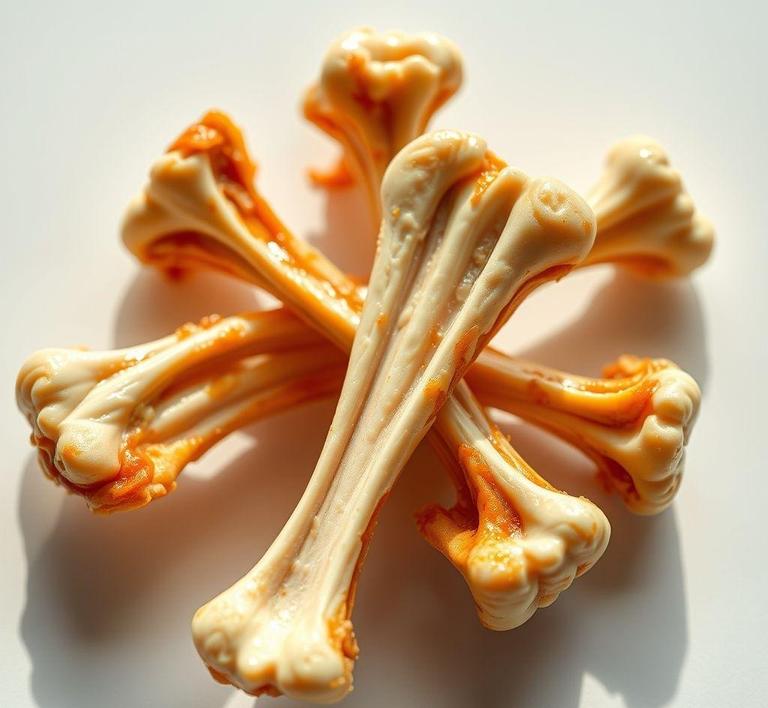If you’ve ever cooked with chicken bones and found yourself wondering whether you can refreeze them, you’re not alone! Refreezing chicken bones can be a bit tricky, but with the right guidelines, it’s definitely doable. Whether you’re using them for making stock, soup, or just want to keep them for later use, knowing how to handle them properly is key to maintaining both food safety and flavor. In this guide, we’ll break down the best practices for refreezing chicken bones, ensuring that you can safely store and reuse them without any worries. So let’s dive into how to make sure you’re handling those chicken bones the right way!
Can You Refreeze Chicken Bones?

Absolutely, you can refreeze chicken bones-and often, it’s not just possible, it’s practical. Chicken bones, whether they come from raw cuts, roasted carcasses, or leftover wings, contain a treasure trove of culinary potential. In particular, they’re loaded with collagen, marrow, and flavor compounds that are perfect for making deeply nourishing stocks or broths. And because these bones are typically destined for simmering rather than direct consumption, food safety risks and texture concerns are far less critical than with whole meat.
Still, it’s essential to understand that the safety of refreezing chicken bones depends on how they were handled. If the bones have remained refrigerated and have not lingered at room temperature for over two hours (or one hour in hot weather), then they are safe to refreeze. If the bones were previously frozen, thawed in the refrigerator, and not cooked yet-or were cooked and cooled properly-they can be refrozen without issue.
In fact, many resourceful home cooks and professional chefs adopt a ‘bone bank’ method: collecting bones in a dedicated freezer bag over time, adding more as they cook, and saving them up until there’s enough for a large batch of stock. This approach prevents waste and maximizes flavor efficiency.
How To Refreeze Chicken Bones?
Refreezing chicken bones isn’t just a matter of tossing them back into the freezer-it’s an art of preserving their quality and maximizing their utility down the road. Here’s a step-by-step guide to do it properly:
-
Cool the Bones Thoroughly:
Whether the bones are raw or cooked, make sure they’ve been cooled completely before freezing. Hot bones placed directly into the freezer can raise the freezer’s internal temperature, jeopardizing the safety of other stored foods.
-
Trim and Clean:
For optimal results, remove any large, loose scraps of fat or meat that may spoil more quickly than the bone itself. You don’t need to sterilize them-just aim for a clean, manageable product. Cooked bones with a bit of browned meat or roasted skin can actually contribute to a richer broth.
-
Portion for Convenience:
Consider portioning bones into quart-sized freezer bags or containers. That way, you don’t have to thaw a giant block of frozen chicken parts just to make a small batch of stock. Label each bag with the date, and whether the bones are raw or cooked-this helps keep your freezer organized.
-
Use Airtight Packaging:
Bones should be stored in well-sealed, freezer-safe bags or containers to prevent freezer burn. Vacuum sealing is ideal, but even double-bagging with a standard zip-top freezer bag can work well.
-
Avoid Multiple Freeze-Thaw Cycles:
Try not to thaw and refreeze the same bones repeatedly. Each thaw cycle increases the chance for bacterial growth and diminishes the quality of any residual meat, marrow, or collagen.
Quality Impact
Here’s where it gets interesting: unlike whole cuts of chicken, refreezing bones doesn’t have a significant impact on quality in most cases-especially if they’re destined for stock or soup. That’s because the bone matrix, connective tissue, and collagen are not nearly as vulnerable to the structural damage caused by freezing and thawing cycles as muscle meat is.
That said, the more frequently bones are frozen and thawed, the more likely they are to develop freezer burn or to lose some of their collagen-rich content. Bones with freezer burn aren’t dangerous, but they can impart off-flavors to your stock, or result in a broth that’s less rich and gelatinous.
The overall impact on flavor is minimal if you follow proper freezing protocols. In fact, some chefs claim that previously roasted and frozen bones produce even deeper, more complex flavors when used in broths. So as long as the bones have been stored properly, you shouldn’t notice any major loss in quality.
In a world where culinary waste is increasingly scrutinized, chicken bones are a humble ingredient that offer both thrift and taste. Refreezing them is not only safe, it’s a smart strategy for making the most out of every meal. Whether you’re crafting a deeply savory chicken stock, preparing for a hearty soup, or simply stockpiling for a rainy day, refreezing bones helps stretch your ingredients and reduce food waste.
The keys to success lie in proper handling, storage, and awareness of food safety. As long as you avoid repeated thaw cycles and keep everything well-labeled and sealed, you’ll be well on your way to richer, more flavorful dishes that begin in the freezer and simmer to life on the stove.
So next time you’re staring down a pile of bones after Sunday dinner, don’t toss them-freeze them. Your future soups, stews, and sauces will thank you.
Is It Safe To Refreeze Chicken Bones?
Yes, it is generally safe to refreeze chicken bones-provided they have been handled correctly. The key factor here is temperature control. If the bones were previously frozen, then thawed in the refrigerator and not left out at room temperature for more than two hours, you can safely refreeze them. The primary concern isn’t so much the bones themselves, as bones are not perishable in the same way that meat is. However, the residual bits of meat, cartilage, and marrow on those bones can harbor bacteria if not managed properly.
It’s also worth noting that bones, especially when intended for making stock or broth, degrade very slowly. Their dense structure means that a second freeze-thaw cycle won’t impact their usability nearly as much as it would raw meat. However, the quality of flavor and collagen release may diminish slightly after multiple freeze-thaw cycles.
Signs That Chicken Bones Should Not Be Refrozen
Refreezing is only an option if the bones are still fresh and safe. Here are some unmistakable signs that chicken bones should not be refrozen:
- Off-putting Odor: A sour, sulfurous, or rotten smell is the most obvious indicator. Even a slight odor change should be treated with caution.
- Slimy or Sticky Texture: If the bones feel tacky or develop a filmy surface, bacterial growth is likely.
- Discoloration: A grayish-green tinge, darkened spots, or mold growth are all indicators of spoilage.
- Room Temperature Exposure: If the bones have been left out for more than 2 hours (or 1 hour if room temp is over 90°F/32°C), they should be discarded.
- Previous Improper Thawing: If the bones were thawed on the counter or in warm water, bacteria may have multiplied rapidly-even if you can’t see or smell anything wrong.
Common Refreezing Mistakes
Many home cooks inadvertently make errors when handling bones intended for multiple uses. Here are some of the most common missteps:
- Thawing at Room Temperature: This method creates a breeding ground for harmful bacteria such as Salmonella and Listeria. Always thaw in the refrigerator or use the microwave’s defrost setting if immediate use is intended.
- Using the Same Freezer Bag: Reusing the original bag for refreezing increases contamination risk. Always transfer to a clean, airtight container or freezer-safe zip bag.
- Refreezing Too Many Times: Each freeze-thaw cycle reduces quality. Even though bones are sturdier than meat, limit the number of times you refreeze to preserve flavor and structural integrity.
- Leaving Bones in the Fridge Too Long Before Refreezing: If you plan to refreeze, do so within 2-3 days of refrigeration. After that, bacterial growth risk increases, even in cold environments.
- Ignoring Cross-Contamination: If the bones touched raw meat or unclean surfaces during the thawing process, bacteria could spread. Clean surfaces and utensils thoroughly before reusing.
Tips And Tricks
Here are some chef-approved tricks to help you maximize safety and efficiency when freezing and refreezing chicken bones:
- Portion Before Freezing: Divide bones into usable portions before freezing. This helps you thaw only what you need, reducing the need to refreeze.
- Label and Date: Always mark the container with the freezing date. Aim to use bones within 6 months for best flavor.
- Vacuum Seal if Possible: Vacuum sealing reduces freezer burn and extends shelf life by limiting exposure to air.
- Freeze Cooked Bones Instead: Roasting or simmering bones before freezing can enhance flavor and reduce spoilage risk. Cooked bones tend to store better and are less prone to bacterial contamination.
- Store in Broth: If you’ve already made stock but want to reuse bones for a second extraction, store the used bones submerged in broth before freezing. This reduces oxidation and keeps them moist.
Conclusion
While the idea of refreezing chicken bones might seem questionable at first, it is absolutely safe-if done thoughtfully. As long as you follow proper food safety guidelines, you can refreeze bones to stretch your resources, reduce waste, and elevate your culinary creations with rich, homemade stocks and broths.
Think of chicken bones not as kitchen scraps, but as hidden treasures. With smart handling and storage, you can get multiple uses from them-unlocking layers of flavor that add depth and warmth to everything from soups to sauces. Just stay vigilant about temperature, cleanliness, and time-and you’ll never let a good bone go to waste.


